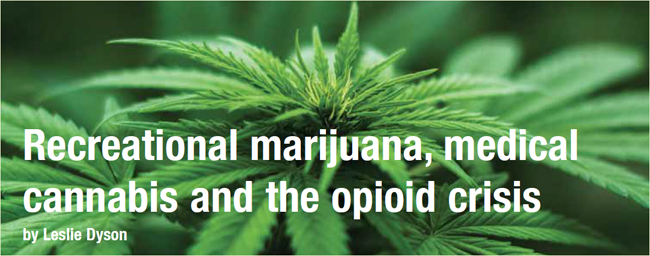Some labour organizations are concerned that the country’s preoccupation with the legalization of recreational marijuana could
lead to employer heavy handedness and abuse of workers’ rights. July 1 marks the day when it becomes legal. Medical use of cannabis
has been legal in this country since 2001.
The Canadian Centre on Substance Use and Addiction issued a study examining strengths and gaps in workplace
substance use policies in Canada.
“From our report, we know that Canadian employers and employees have lots of questions and concerns about
workplace policies surrounding substance use,” said CEO Rita Notarandrea. “Harmful substance use can have an impact on
an individual’s health, on productivity, absenteeism, turnover and workplace morale; not to mention the potential impact on
the health and safety of other employees, particularly in safety sensitive industries.”
The centre found that not enough companies and organizations have comprehensive, well-developed workplace
substance use policies. Where policies do exist, there is often an imbalance between disciplinary measures and supportive measures to
help employees.
This spring, directors of Canadian employee benefit plans were invited to hear the latest findings from experts in the use
of cannabis.
Dr. Danial Schecter, from the Cannabinoid Medical Clinic in Toronto, said cannabis use can be dangerous for workers in
safety sensitive positions. It has been shown to have short-term negative impacts on:
• driving performance such as staying in one’s lane
• reaction time, motor coordination, divided attention, short-term memory and decision-making under time pressured
and informationally-complex conditions
Blood concentration of cannabis has been linked to impaired driving capacity and the new legislation allows for
fines and even jail time.
Medical marijuana
There is a difference between marijuana with THC (tetrahydrocannabidinol) – the intoxicant found in the
plant used for recreation – and the marijuana with CBD (cannabidiols) – a largely non-addictive part of the plant used
for many medical conditions.
Timothy Clarke, president of Health Consulting Inc. in Toronto, said a 2017 study found that 22% of Canadians use
marijuana at least occasionally and a further 17% more were willing to try it once it became legal.
Schecter talked about the history of cannabis. The first recorded use was in 2800 BCE in China. It was listed in the US
Pharacopoeia in 1870 and became a prohibited substance in the1930s. Medical use of cannabis has been legal for 17 years and is an
eligible medical expense according to the Canada Revenue Agency.
There is substantial evidence that it helps with:
• chronic pain in adults
• chemotherapy induced treatment of nausea and vomiting
• management of spasticity (MS)
• treatment of intractable seizures
There is moderate evidence that it improves sleep disturbance associated with obstructive sleep apnea, fibromyalgia, chronic pain,
and MS.
However, there is limited evidence that it:
• improves dementia symptoms
• improves Parkinson disease symptoms
• reduces schizophrenia symptoms
• improves posttraumatic stress disorder symptoms
• increases appetite and decreases weight loss associated with HIV/AIDS
• improves Tourette Syndrome symptoms
• improves symptoms in social anxiety disorders
And cannabis can cause impairment, dependency, tolerance and abuse. But so can opioids, benzodiazepines, antidepressants and
muscle relaxers, Schecter pointed out.
Cannabis may improve people’s quality of life while decreasing
the need for other medications, however more research is required.
The opioid epidemic
The change in regulations around marijuana use comes at a time when we are seeing hundreds of deaths due to fentanyl
overdoses.
The real focus of concern for the B.C. Construction Industry Rehab Plan is the opioid epidemic. More than 1,900 people have
died of illicit drug overdoses in B.C. since the province declared a public health emergency nearly two years ago.
While some workers trying to cope with addiction fear not being called to work if they seek help. However, if a company fires an employee without providing help it is breaking the law and violating human rights and collective agreements. Employers would have to
rehire people and provide treatment.”

